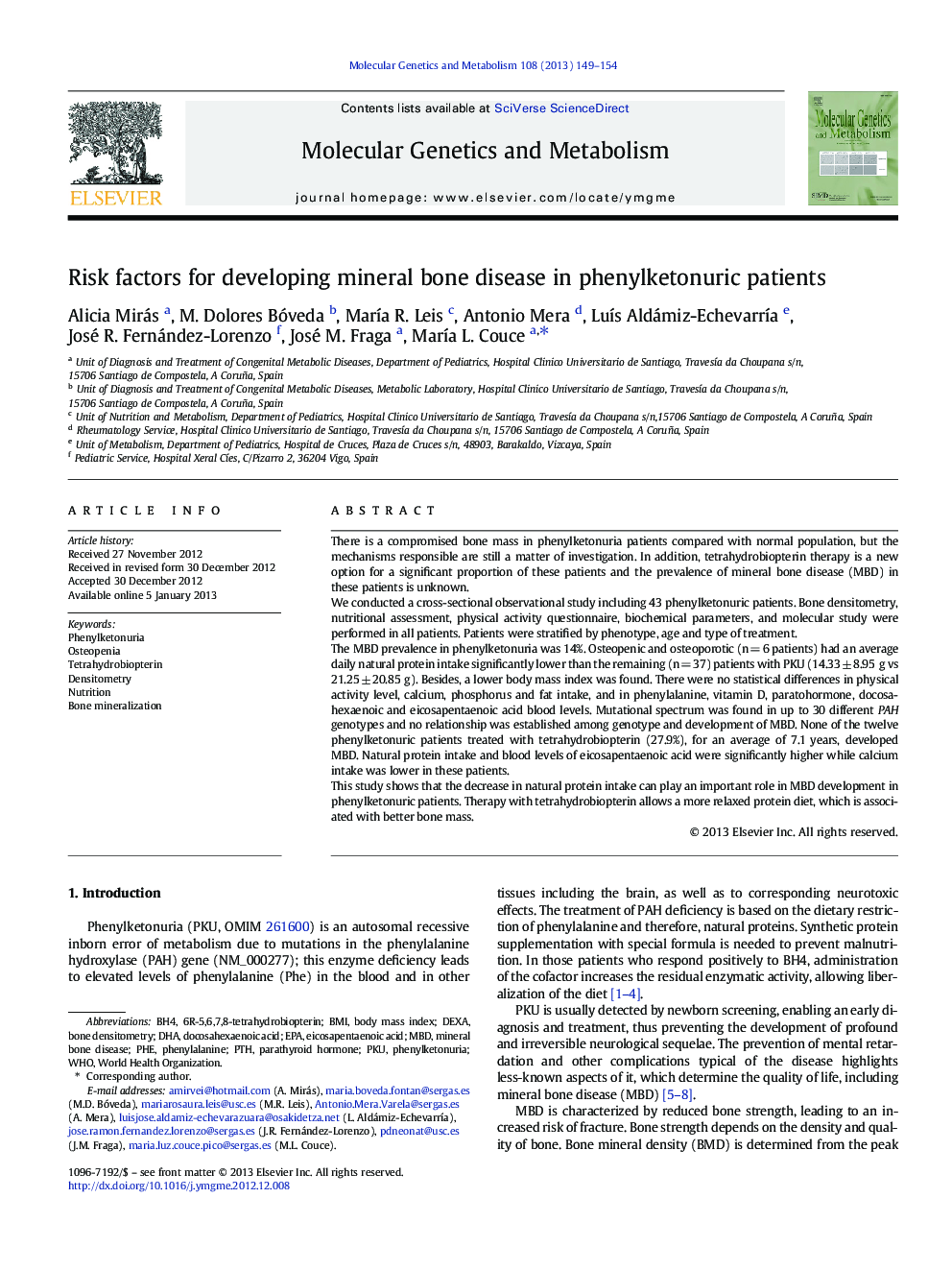| کد مقاله | کد نشریه | سال انتشار | مقاله انگلیسی | نسخه تمام متن |
|---|---|---|---|---|
| 1998565 | 1065815 | 2013 | 6 صفحه PDF | دانلود رایگان |

There is a compromised bone mass in phenylketonuria patients compared with normal population, but the mechanisms responsible are still a matter of investigation. In addition, tetrahydrobiopterin therapy is a new option for a significant proportion of these patients and the prevalence of mineral bone disease (MBD) in these patients is unknown.We conducted a cross-sectional observational study including 43 phenylketonuric patients. Bone densitometry, nutritional assessment, physical activity questionnaire, biochemical parameters, and molecular study were performed in all patients. Patients were stratified by phenotype, age and type of treatment.The MBD prevalence in phenylketonuria was 14%. Osteopenic and osteoporotic (n = 6 patients) had an average daily natural protein intake significantly lower than the remaining (n = 37) patients with PKU (14.33 ± 8.95 g vs 21.25 ± 20.85 g). Besides, a lower body mass index was found. There were no statistical differences in physical activity level, calcium, phosphorus and fat intake, and in phenylalanine, vitamin D, paratohormone, docosahexaenoic and eicosapentaenoic acid blood levels. Mutational spectrum was found in up to 30 different PAH genotypes and no relationship was established among genotype and development of MBD. None of the twelve phenylketonuric patients treated with tetrahydrobiopterin (27.9%), for an average of 7.1 years, developed MBD. Natural protein intake and blood levels of eicosapentaenoic acid were significantly higher while calcium intake was lower in these patients.This study shows that the decrease in natural protein intake can play an important role in MBD development in phenylketonuric patients. Therapy with tetrahydrobiopterin allows a more relaxed protein diet, which is associated with better bone mass.
► The decrease in natural protein intake can play an important role in MBD development in phenylketonuric patients.
► Therapy with tetrahydrobiopterin is associated with better bone mass.
Journal: Molecular Genetics and Metabolism - Volume 108, Issue 3, March 2013, Pages 149–154